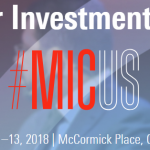At the time of publication, this fund was named Index Funds S&P 500® Equal Weight.
Objective and strategy
The fund equally weights all of the stocks in the S&P 500 index and rebalances its portfolio quarterly.
Adviser
The Index Group, headquartered in Colorado Springs, Colorado. While they are legally permitted to provide other advisory services, managing their mutual fund is their only current activity.
Manager
Michael Willis. Mr. Willis has been president of Index Funds since 2006. His earlier stints included serving as a senior vice president of UBS Financial Services (2003 to 2004), senior vice president-investment of PaineWebber (1999-2003) and first vice president of Smith Barney (1994-1999).
Strategy capacity and closure
$200-300 billion. Capacity constraints are normally imposed by starting with (1) the desired size of the lowest market cap fund in the portfolio or (2) by the need to be able to unwind positions with limited liquidity quickly and quietly. Neither of those is a meaningful constraint here: their tiniest firm has a $2 billion market cap and it will never get more than 0.22% of the portfolio and positions would change only as the composition of the underlying index does.
Management’s stake in the fund
Nothing or everything, depending on what counts. In the narrow “reporting to the SEC” sense, neither the manager nor the trustees have anything invested in the fund. That would normally be a bad sign. In this case, it’s not. Manager Michael Willis explains that the advisor is underwriting the fund to the tune of several hundred thousand dollars a year; at base, the money they’d normally invest in the fund is getting sunk into operations. The trustees’ commitment seems reflected in their willingness to accept $16/year for their service to the fund.
Opening date
April 30, 2015.
Minimum investment
$1,000
Expense ratio
0.25%, after waivers, on assets of $34 million. The fund has experienced very steady, consistent inflows. The expense before waivers is 1.98%.
Comments
The attractiveness of any index fund comes down to two elements: the appeal of the underlying index and the efficiency with which the manager executes the strategy. INDEX has much to offer on both fronts.
We’ll start with the underlying index.
The S&P 500 is not the 500 largest stocks in the U.S. market, nor is it the stocks of the 500 largest corporations. It is a collection of stocks chosen by a secretive committee at Standard & Poor’s. There are currently 505 stocks in the S&P 500, chosen by the committee from among a universe of qualifying stocks. The qualification screens for inclusion are:
- They must be U.S. firms
- With a market capitalization of $6.1 billion or more
- At least 50% of the outstanding shares of stock must be available for public trading
- As a measure of financial viability, the firms must have positive earnings over the past quarter and year, which excludes Tesla despite its $80 billion market cap, and
- They must be “highly tradable common stocks with active and deep markets.” That criterion excluded Berkshire Hathaway, whose “A” shares rarely traded, for years.
About one company gets chucked out of the S&P 500 about every two weeks.
The amount of “space” in the index that a company occupies is determined purely by its market capitalization; Apple, with a near trillion-dollar stock valuation, carries more weight in the index than the index’s 100 smallest firms combined.
The argument for investing in the S&P 500 Equal Weight Index is simple: you’re troubled by the fundamental flaw in the original S&P 500, which is its cap-weighting. It rewards, and becomes dependent on, the market’s largest and most overvalued stocks. And the sheer popularity of S&P 500 indexing (there are $3.4 trillion in S&P 500 index funds) means that more money is automatically poured into those stocks, driving them to even higher valuations.
Here’s what it means for the index to be top heavy. Just 15 firms comprise more than 25% of the total capitalization of the S&P 500; as of mid-May 2018, those firms traded at more than three times the valuation of the index as a whole.
| Percentage of the index | YTD returns, through May 17, 2018 | P/E ratio | |
| Top 15 firms | 26.37 | 5.74% | 52.69 |
| S&P 500 | 100 | -0.42 | 17 |
A cap-weighted index, then, is a momentum play driven, up or down, by the fates of a handful of behemoth stocks drawn mostly from the tech and financial sectors. If investors bid those stocks up to unsustainable levels, the index automatically increases your exposure to them.
There is, however, a viable alternative with a long track record. That alternative is the equal-weight version of the S&P 500. In this version, every stock simply receives the exact same weight. Standard & Poor’s designates the cap-weighted index as SPX and the equal-weighted index as EWI. For the purposes of our discussion below, we’ll use those same symbols.
Equal-weighting introduces three important tilts into EWI:
- The EWI is contrarian; at its quarterly rebalancing, the managers sell down the stocks that have risen most sharply and buy more of those that have fallen.
- The EWI is modestly value-oriented; the price/earnings, price/book, price/sales and price/cash flow ratios are all slightly lower for EWI than for SPX.
- The EWI offers a modestly lower market cap; the average market cap is $25 billion for EWI, compared to SPX’s $96 billion.
Both indexes offer exposure to the same vetted, financially viable mid- to large-cap US stocks. The only difference is how much exposure you receive to each.
The combination of contrarian, value and size leads to two outcomes:
- EWI has higher returns than SPX. Michael Willis, portfolio manager for Index Funds S&P 500 Equal Weight (INDEX) notes “Since the inception of the S&P 500® Equal Weight Index on 01/08/2003 through 12/31/2017, the S&P 500 Equal Weight Index beat the S&P 500 Index 10 out of 15 years, and produced higher 3-year, 5-year, and 10-year returns.” Over that period, $10,000 in SPX would have grown to $40,000 while the same amount in EWI would have grown to $53,000. With those returns, SPX would have beaten 92% of all large cap funds; EWI would have beaten 100% of them.
- EWI has higher volatility than SPX. Over the past 10 years, the standard deviation for SPX is 15% while EWI clocked in at 17.6%. Similarly, the maximum 10-year drawdown for EWI is 54.3% against 50.9% for the SPX.
The notion that higher gains come at the price of higher volatility should neither scare nor surprise.
If you would like to reap those higher rewards, INDEX has proven to be a worthy option. With expenses of just 0.25%, it’s among the cheapest index funds especially when you combine it with a low $1000 minimum investment. Mr. Willis has been managing the fund for three years and he’s signaled his commitment to his investors by pouring substantial amounts of his own money into creating and maintaining an accessible, low-cost vehicle.
Bottom Line
In the long-term, biases toward value, smallness and diversification pay off handsomely. One attempt to calculate the returns of the equal-weight and cap-weight versions of the S&P 500 back to 1926 estimate that the equal-weight version outperforms the cap weighted version by 281 basis points per year. Skeptics of this approach, including our colleague Sam Lee, note that “there’s no such thing as a free lunch.” The higher returns come at the price of higher volatility, higher taxes as a result of more frequent portfolio rebalancing and the prospect of lagging badly during periods where mega-caps soar. All of which is true, though modestly so. For investors looking to de-FAANG their portfolios while maintaining exposure to the S&P 500 companies, INDEX offers a sensible, affordable option.













